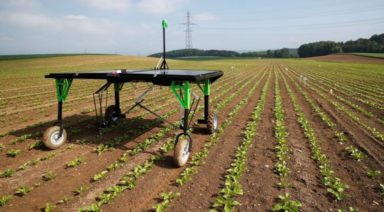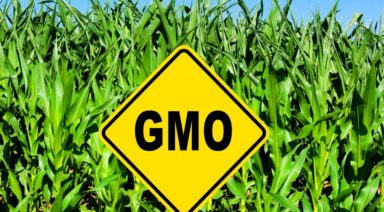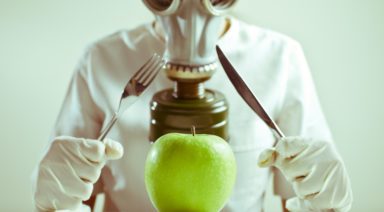CRISPR Has Started Genetic Engineering on Humans and Food

With the technology growing rapidly and CRISPR at-home genetic engineering kits being sold to schools and homes, interest in gene-editing technology is at an all-time high, and so is concern. As our sci-fi fantasies inch closer and closer to fruition, gene-editing is changing the face of genetic engineering on humans, plants, and animals.
How CRISPR Gene Editing Works
CRISPR is an acronym for Clustered Regularly Interspaced Short Palindromic Repeats, which are essentially DNA sequences in bacteria that retain segments of DNA from viruses that have attacked them in the past. These unique segments occur intermittently in between our regularly repeating segments and are there so our immune system knows what to look out for in the future.
In addition to CRISPR, Cas9, or CRISPR-associated proteins, work to snip segments of DNA in invading viruses. Scientists employed these Cas9 enzymes to manipulate or edit genes. Over the course of this technology’s development, two scientists figured out how to re-engineer the Cas9 by feeding it artificial RNA molecules in order to target a specific gene. The Cas9 protein uses that RNA as a reference for what it needs to cut up in the DNA sequence. This allowed for the ability to target and snip any DNA sequence, leading to the array of applications the technology has potential for today.
The CRISPR process was first noticed in the early ‘90s by a Spanish microbiologist named Francisco Mojica. Its application has since led to contention between scientists for credit in its discovery and the iterations that have led to its current effectiveness.
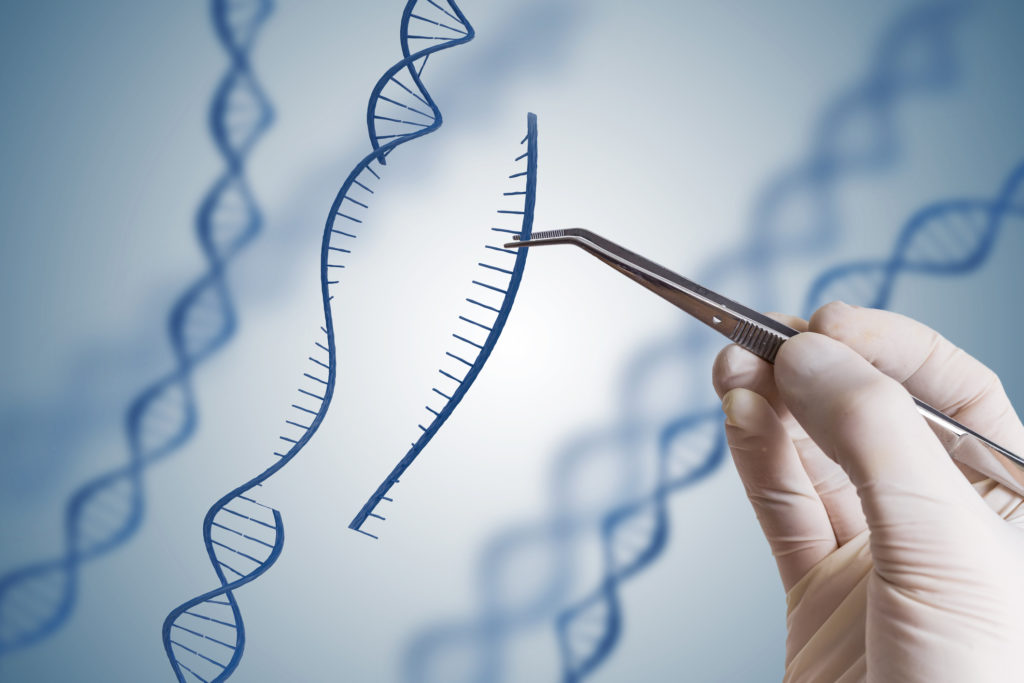
Companies are vying for patents and government deregulation for use of the technology. One company, Caribou Biosciences, aims to use the technology for genetic engineering on humans to prevent hereditary diseases like Alzheimer’s and cystic fibrosis, or to target and simplify detection of viruses like HIV.
Some companies plan to use DNA editing to prevent spoilage of vegetables or decrease fat content in pigs. Others already have it in play. The bacteria Streptococcus Thermophilus, a probiotic in yogurt, spoils when it is exposed to bacteriophages, so DuPont used CRISPR gene editing to create bacteriophage-resistant yogurt that is now being sold across the world.
In China, pigs were bred using the CRISPR/Cas9 editing to introduce a missing gene that regulates body temperature. The pigs were also bred to have less body fat, to save farmers money and give the pig a better chance of survival in cold weather. The pigs’ embryos were cloned and bred, showing 24 percent less body fat. Chinese scientists heralded this success as an advancement in the future of animal welfare.
Genetic Manipulation of Plants
The GMO debate has been and continues to be a contentious topic for consumers and growers alike. With GMO labeling becoming more and more of a consumer demand, producers struggle to maintain sales when their products are not deemed organic and non-GMO. Unsurprisingly, the CRISPR gene editing technology has become a tool to sidestep the GMO label. But isn’t modified synonymous with edited?
GMOs prior to CRISPR introduce a foreign genetic material, changing the genetic composition, essentially creating a hybrid of the produce. With CRISPR gene editing, there is no foreign genetic material introduced, rather an organic process is manipulated to snip off undesirable parts of the gene. Some scientists have compared it to editing text in a word document.
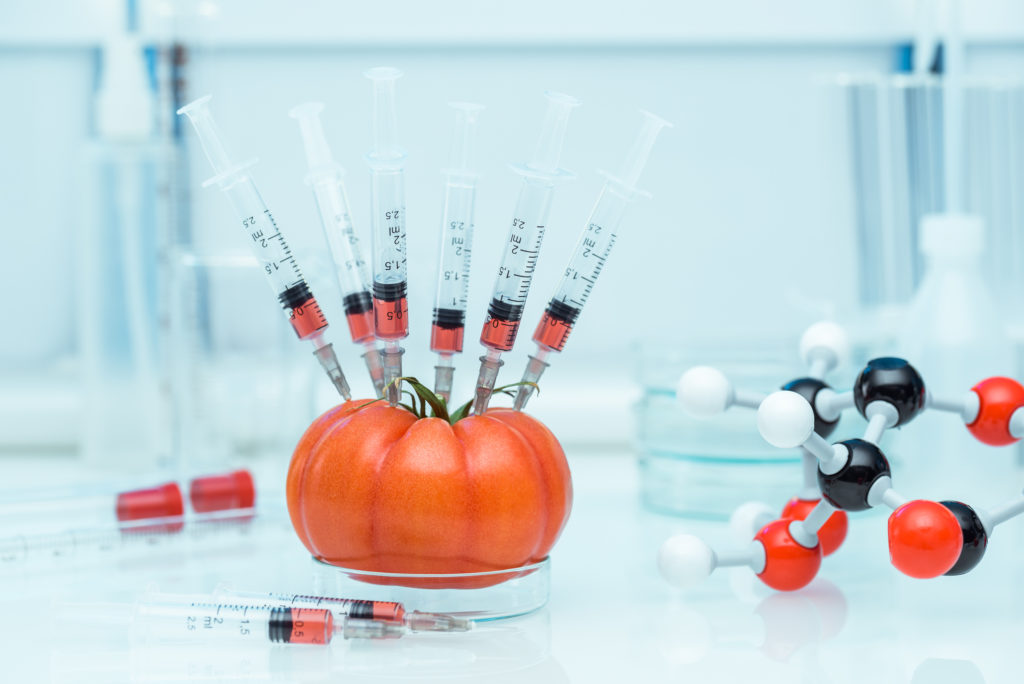
In the United States, the FDA continues to eye the technology somewhat warily, as it is classified as a drug due to chemical manipulation. The administration concedes that it doesn’t want to regulate the technology too heavily, in the event that it could be a hindrance on American agriculture.
Some of the potential uses for CRISPR gene editing have been shown to have value already with no apparent negative effects. For example, white button mushrooms turn brown shortly after they are sliced, but a slight gene manipulation solved this problem by targeting a genome responsible for melanin production. Other crops that could benefit are commercial tomatoes that have less flavor, wheat that is susceptible to mildew, and corn that is susceptible to drought conditions.
But with technology this new and untested, it’s hard to tell what negative effects could manifest down the road and whether the concerns related to current GMO foods, are as justified in this scenario.
Human Genetic Engineering Pros and Cons
There are obviously ethical concerns when it comes to genetically editing humans, despite the potential for curing some of the diseases that plague us. One of the bigger concerns is that it will inevitably lead to designer babies, whose genes have been edited to give them superior intelligence and other favorable traits. This type of engineering would likely be expensive, only allowing affluent families access to the technology and further exacerbating social inequality.
Others are averse to CRISPR gene editing because it’s permanent, meaning those snipped segments of DNA can’t be reversed and would be passed down to future generations. With technology this new that’s manipulating nature, there is always room for mistakes and mutations that would need to be contained or corrected; not to mention, permanently messing with your genetic makeup is pretty frightening.
One of the errors that can occur with DNA editing is called mosaicism, in which only one or a few cells obtain the intended changes, rather than all of them. This is likely to lead to mutations and other unintended consequences.

A recently designed variation of the Cas9 protein can target individual genetic components even more precisely. This Cas13 protein targets base pairs rather than double stranded segments of DNA, which are cut and pasted with Cas9. Cas13 corrects the mutation instead of removing and replacing the targeted strand. Many diseases, such as sickle-cell anemia, are caused by single mutations at this level and could potentially be reversed.
This technology doesn’t seem to be going away anytime soon with CRISPR genetic engineering kits being sold as DIY projects for $150. But no need to worry, these kits only allow for the modification of tiny microbes. Genetic self-modification isn’t anywhere near that accessible or inexpensive at this point.
It remains to be seen where CRISPR gene editing will lead over the coming years. Scientists in England and China have been experimenting on human embryos and the first test of this nature was undertaken in the US just a few months ago, despite warnings from government agencies and the scientific community. Some government officials have even gone so far as to refer to the technology as a weapon of mass destruction. Could we be on the brink of a major breakthrough with genetically engineered humans, or simply meddling in nature where we shouldn’t be?
The Mystery of Torsion Fields

Russian scientist Nikolai Kozyrev was considered a prodigy. In 1925, at age 17, he published his first scientific paper, which focused on astrophysics and the atmosphere of the sun and other stars. It was met with great acclaim by other scientists.
At age 20, he graduated from the University of Leningrad with degrees in physics and mathematics. By age 28, he was a college professor and distinguished astronomer. To the science community at large, this promising young physicist disappeared for the next 11 years.
Nikolai Kozyrev: Russian Concentration Camps
While Korzyrev was enjoying a successful career as a professor and researcher, Josef Stalin, leader of the Soviet Union, was feeling threatened by scientists whom he perceived were independent thinkers. He was concerned they would see through his propaganda program. To prevent this, in 1936, he arrested them and sent them to concentration camps. Nikolai Kozyrev was among those imprisoned. There wasn’t much for him to do during the long 11 years he spent in the camps except to observe, meditate, and think.
During his imprisonment, Kozyrev was enthralled watching bacteria grow and noticed it grew in a perfect spiral. This led him to conclude that all life-forms likely draw off of an unseen spiraling source of energy. This energy is as important to maintenance and growth of life as are “eating, drinking, breathing, and photosynthesis.”
Kozyrev also concluded that this spiraling energy and growth is how time works, with the Earth orbiting in space by way of a “complex spiraling pattern.”
As the Earth rotates on its axis as it orbits the sun, it releases energy, or torsion waves, that propel it through space. The torsion waves travel at speeds faster than the speed of light. These torsion fields are actually “waves of time” which also cause ripples in gravity. Indeed, some scientists now believe that “electromagnetism, gravity and torsion waves are all members of the same family; they are just different forms of ether vibrations.”






















